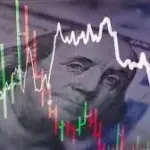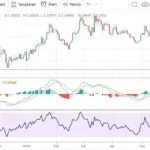Currency markets are not driven solely by economic data or central bank decisions. Geopolitical events—ranging from wars and trade disputes to elections and diplomatic alliances—can significantly influence the direction and volatility of exchange rates. In 2025, as global tensions and realignments reshape the world economy, understanding how geopolitics affects currencies has never been more crucial for traders and investors alike.
1. How Geopolitics Influences Currency Values
At its core, forex reflects confidence. When geopolitical uncertainty rises, investors seek safe havens—currencies and assets perceived as stable and liquid. Conversely, currencies of countries facing political instability or global tension often depreciate as investors move capital elsewhere.
Some of the most common geopolitical triggers include:
- Military conflicts and wars
- Trade sanctions or tariffs
- Energy supply disruptions
- Elections and regime changes
- Diplomatic breakdowns or alliances
Each of these can shift global capital flows, impact commodity prices, and alter perceptions of economic risk—all of which directly affect currency movements.
2. Safe-Haven Currencies: Where Investors Run in Uncertainty
During times of geopolitical tension, certain currencies tend to strengthen because of their perceived safety and stability. These include:
- US Dollar (USD): The world’s primary reserve currency, benefiting from liquidity and global trust.
- Swiss Franc (CHF): Supported by Switzerland’s political neutrality and strong financial sector.
- Japanese Yen (JPY): Often rises when global risk sentiment deteriorates, despite Japan’s low yields.
When conflicts or crises occur—such as the Russia-Ukraine war or escalating tensions in the Middle East—these safe-haven currencies typically rally as investors exit riskier markets.
3. Energy and Commodity Currencies: The Geopolitical Connection
Energy politics also play a crucial role. Oil, gas, and commodity prices often surge or fall based on geopolitical developments, affecting countries that export or import these resources.
- Oil exporters like Canada (CAD), Norway (NOK), and Saudi Arabia (SAR) tend to benefit from higher oil prices driven by geopolitical supply disruptions.
- Oil importers, such as Japan and India, often see their currencies weaken when energy prices spike.
Thus, geopolitical risks in the Middle East or disruptions in global shipping routes can directly move commodity-linked currencies.
4. Elections, Alliances, and Political Shifts
Political transitions and trade alliances can also create significant currency fluctuations. For instance:
- A change in government with new fiscal or trade policies can quickly alter investor sentiment.
- Regional alliances such as BRICS expansion or new trade blocs can influence long-term currency realignments.
- Brexit, for example, fundamentally reshaped the relationship between the pound and the euro—an illustration of how political decisions can permanently alter currency dynamics.
In 2025, key elections in major economies like the US, UK, and parts of Europe may introduce new uncertainty and trading opportunities in forex markets.
5. The Emerging Role of China and BRICS in Geopolitical Currency Shifts
The global currency landscape is gradually becoming multipolar. The Chinese yuan (CNY) continues to gain influence as China expands trade and settlement in its own currency, reducing reliance on the US dollar. Meanwhile, BRICS nations are exploring alternative payment systems and reserve assets, potentially reshaping global currency flows in the long term.
While the US dollar remains dominant, these shifts could influence emerging market currencies and the broader balance of power in forex markets.
6. Managing Geopolitical Risk in Forex Trading
For traders, geopolitical risks are both threats and opportunities. Sudden headlines can trigger sharp moves—but also potential profits for those prepared. Strategies to manage these risks include:
- Monitoring global news and policy statements from key governments.
- Using stop-loss orders to limit downside during unexpected volatility.
- Diversifying portfolios across different regions and asset classes.
- Trading safe-haven pairs during high uncertainty periods.
Understanding the geopolitical backdrop helps traders anticipate potential volatility and avoid being caught off guard by market shocks.
Conclusion: The Politics Behind Every Price Move
Geopolitics is a powerful, often unpredictable force in global finance. From sanctions and wars to elections and trade realignments, political developments shape investor confidence and capital flows—driving the ups and downs of currencies.
In 2025 and beyond, traders who integrate geopolitical awareness into their strategies will be better positioned to anticipate shifts in market sentiment and capitalize on emerging trends in the dynamic world of forex.
Would you like me to make this article SEO-optimized for publication (with keyword focus and meta description), or formatted for a financial magazine-style publication (more narrative and analytical)?
1. How Geopolitics Influences Currency Values
At its core, forex reflects confidence. When geopolitical uncertainty rises, investors seek safe havens—currencies and assets perceived as stable and liquid. Conversely, currencies of countries facing political instability or global tension often depreciate as investors move capital elsewhere.
Some of the most common geopolitical triggers include:
- Military conflicts and wars
- Trade sanctions or tariffs
- Energy supply disruptions
- Elections and regime changes
- Diplomatic breakdowns or alliances
Each of these can shift global capital flows, impact commodity prices, and alter perceptions of economic risk—all of which directly affect currency movements.
2. Safe-Haven Currencies: Where Investors Run in Uncertainty
During times of geopolitical tension, certain currencies tend to strengthen because of their perceived safety and stability. These include:
- US Dollar (USD): The world’s primary reserve currency, benefiting from liquidity and global trust.
- Swiss Franc (CHF): Supported by Switzerland’s political neutrality and strong financial sector.
- Japanese Yen (JPY): Often rises when global risk sentiment deteriorates, despite Japan’s low yields.
When conflicts or crises occur—such as the Russia-Ukraine war or escalating tensions in the Middle East—these safe-haven currencies typically rally as investors exit riskier markets.
3. Energy and Commodity Currencies: The Geopolitical Connection
Energy politics also play a crucial role. Oil, gas, and commodity prices often surge or fall based on geopolitical developments, affecting countries that export or import these resources.
- Oil exporters like Canada (CAD), Norway (NOK), and Saudi Arabia (SAR) tend to benefit from higher oil prices driven by geopolitical supply disruptions.
- Oil importers, such as Japan and India, often see their currencies weaken when energy prices spike.
Thus, geopolitical risks in the Middle East or disruptions in global shipping routes can directly move commodity-linked currencies.
4. Elections, Alliances, and Political Shifts
Political transitions and trade alliances can also create significant currency fluctuations. For instance:
- A change in government with new fiscal or trade policies can quickly alter investor sentiment.
- Regional alliances such as BRICS expansion or new trade blocs can influence long-term currency realignments.
- Brexit, for example, fundamentally reshaped the relationship between the pound and the euro—an illustration of how political decisions can permanently alter currency dynamics.
In 2025, key elections in major economies like the US, UK, and parts of Europe may introduce new uncertainty and trading opportunities in forex markets.
5. The Emerging Role of China and BRICS in Geopolitical Currency Shifts
The global currency landscape is gradually becoming multipolar. The Chinese yuan (CNY) continues to gain influence as China expands trade and settlement in its own currency, reducing reliance on the US dollar. Meanwhile, BRICS nations are exploring alternative payment systems and reserve assets, potentially reshaping global currency flows in the long term.
While the US dollar remains dominant, these shifts could influence emerging market currencies and the broader balance of power in forex markets.
6. Managing Geopolitical Risk in Forex Trading
For traders, geopolitical risks are both threats and opportunities. Sudden headlines can trigger sharp moves—but also potential profits for those prepared. Strategies to manage these risks include:
- Monitoring global news and policy statements from key governments.
- Using stop-loss orders to limit downside during unexpected volatility.
- Diversifying portfolios across different regions and asset classes.
- Trading safe-haven pairs during high uncertainty periods.
Understanding the geopolitical backdrop helps traders anticipate potential volatility and avoid being caught off guard by market shocks.
Conclusion: The Politics Behind Every Price Move
Geopolitics is a powerful, often unpredictable force in global finance. From sanctions and wars to elections and trade realignments, political developments shape investor confidence and capital flows—driving the ups and downs of currencies.
In 2025 and beyond, traders who integrate geopolitical awareness into their strategies will be better positioned to anticipate shifts in market sentiment and capitalize on emerging trends in the dynamic world of forex.















